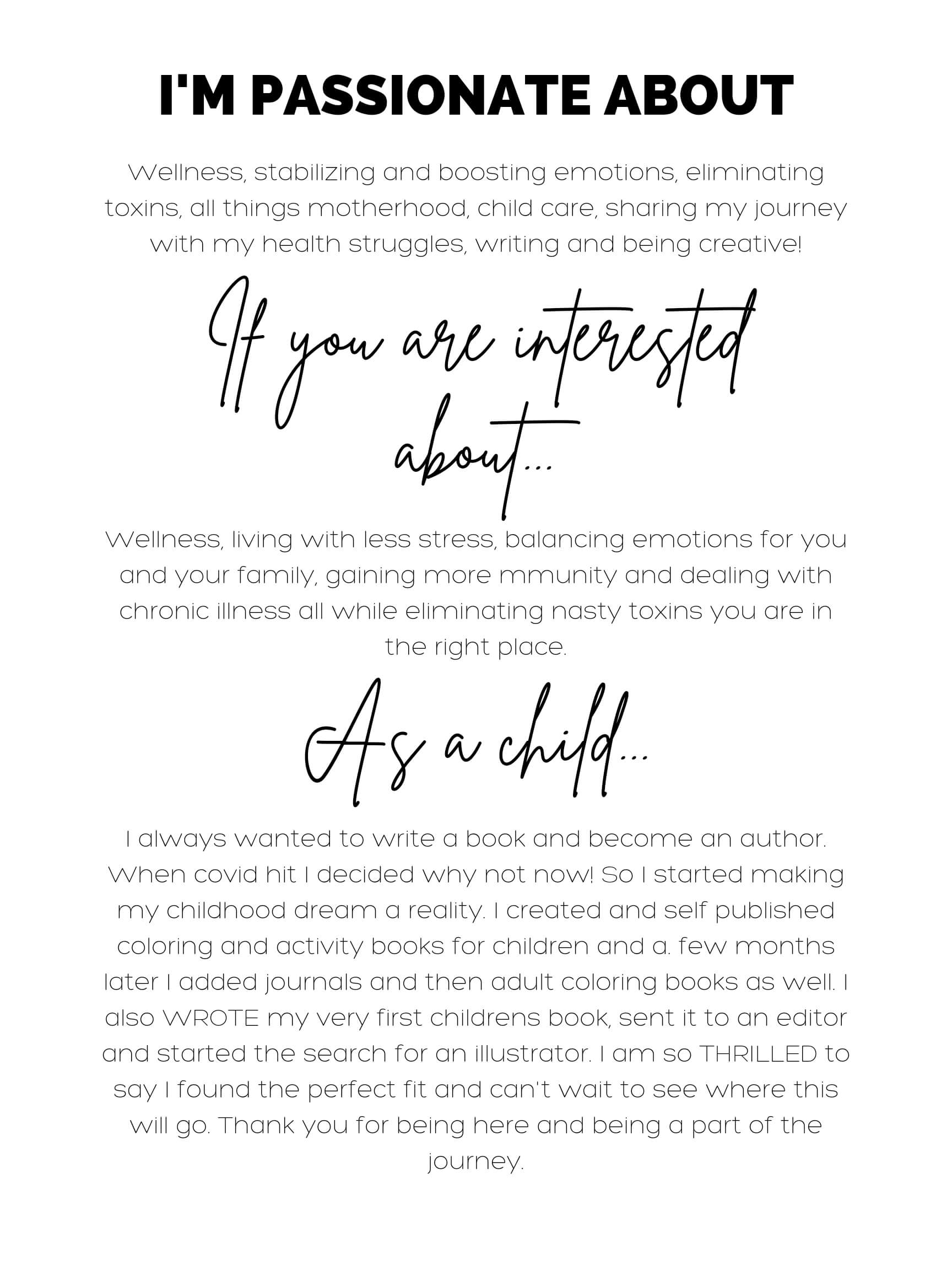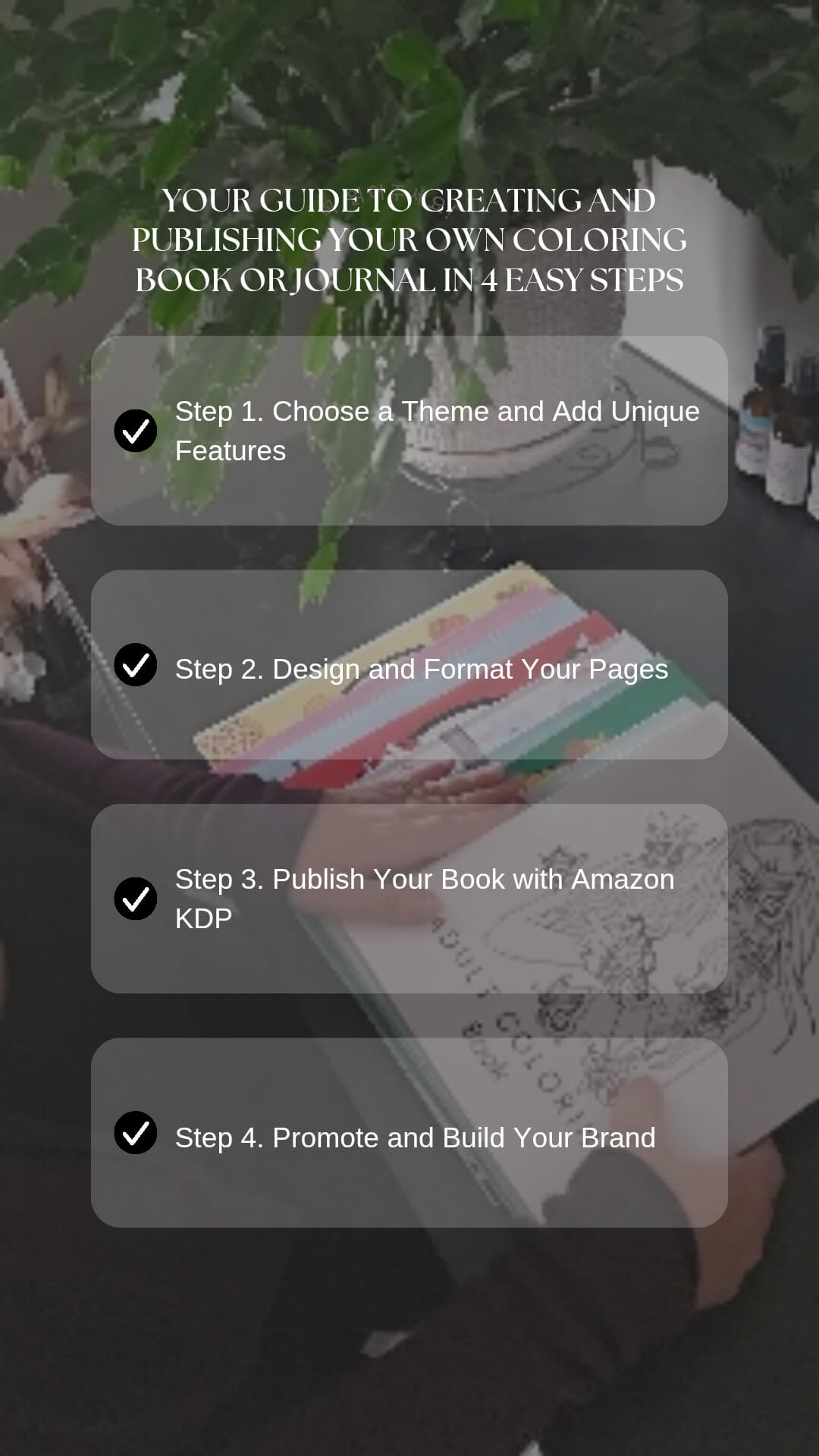
Have you ever dreamed of creating your own coloring book or journal? With the growing popularity of creative outlets like adult coloring books and journaling, now is the perfect time to turn your vision into a reality. Whether you’re an artist, a writer, or someone looking to share something meaningful, this guide will help you design, create, and publish your very own book with ease.
Here's how you can do it in just four simple steps!
Step 1. Choose a Theme and Add Unique Features
Start by deciding what makes your book special. Your theme and features will influence the audience you attract. Here are a few ideas to get you started:
• Pick a Theme: Focus on topics that resonate with you and your audience. For example, you might create a coloring book featuring nature, animals, mandalas, or even fantasy worlds. If you’re creating a journal, consider themes like self-reflection, gratitude, or personal growth.
• Offer a Unique Twist: Make sure your book stands out by including features such as motivational quotes, affirmations, or even allowing users to submit personalized pages to include in the book. These touches will take your creation to the next level.
Pro Tip:
You can cater to a wider range of interests by offering multiple themes in one book, such as a section for nature lovers and another for intricate mandalas. This ensures there’s something for everyone.
Step 2. Design and Format Your Pages
This is where your creativity comes to life! Start crafting the individual pages of your book or journal:
• Coloring Book Pages: Focus on creating designs that are both visually engaging and enjoyable to color. Use a mix of intricate and simple patterns to cater to both beginners and advanced colorists.
• Journal Pages: Add thoughtful prompts, affirmations, and motivational quotes to inspire and engage users. Pair these with aesthetically pleasing layouts, decorative elements, and space for free writing or doodling.
• High-Quality Artwork: If you’re not an artist, consider hiring a freelance designer to help bring your ideas to life. Platforms like Fiverr or Upwork are great places to connect with talented creators or create easily using graphics already made. Just check on publication rights prior to publishing.
Tools for Formatting:
You can use design tools like Adobe Illustrator, Procreate, or Canva to craft your pages. My favorite is Canva!Make sure the artwork is high resolution (300 DPI) to ensure polished, professional-quality printing.
Step 3. Publish Your Book with Amazon KDP
Amazon Kindle Direct Publishing (KDP) makes it easy to publish and sell your book with no upfront costs.
Here’s how:
• Format Your File: Follow Amazon KDP’s formatting guidelines to ensure your book meets their requirements. You’ll need to save your file as a PDF and include options for bleed (edge-to-edge printing) if your designs go up to the page's edge.
• Set Up Your Account: Create an account on Amazon KDP and upload your file, along with your book’s cover art. Consider offering personalizable covers so users can make the book their own.
• Choose Your Paper Type: High-quality paper enhances the customer experience, so choose a premium option, especially for coloring books.
• Price and List Your Book: Set a competitive price while factoring in the time and effort you’ve poured into your project.
Finally, write an engaging description to make your book stand out on platforms like Amazon.
Pro Tip:
Make use of keywords in your book’s title and description, such as “eco-friendly coloring book” or “motivational journal for self-care,” to boost its visibility on Amazon’s search engine.
Step 4. Promote and Build Your Brand
With your book listed on Amazon, it’s time to get the word out! Use a mix of online and offline strategies to promote your creation and engage with your audience:
• Leverage Social Media: Share behind-the-scenes stories, sneak peeks of your designs, and testimonials from early users on platforms like Instagram, Pinterest, and TikTok. Videos showcasing users coloring or journaling are particularly effective!
• Collaborate with Influencers: Partner with influencers in the arts and crafts or wellness spaces to showcase your book to their audience.
• Create a Community: Build a space for like-minded individuals by starting a Facebook group or online forum. This will help foster a sense of belonging and encourage repeat buyers.
• Email Marketing: Start collecting emails of interested customers and send out updates about new themes, limited-time discounts, or giveaways.
Bonus Tips:
Promote the eco-friendly aspect of your book, like sustainable materials or packaging, as sustainability is an important buying factor for many people. Also, highlight your premium paper quality and customization options to further attract attention.
Why Choose Amazon KDP?
Amazon KDP is one of the easiest and most cost-effective ways to publish your book. With its on-demand printing model, you don't need to worry about inventory or upfront costs. Plus, Amazon’s global reach allows you to connect with readers all over the world.
By following these steps, you can transform your creativity into a tangible product that resonates with your audience.
Whether it’s a coloring book filled with intricate designs or a journal with uplifting affirmations, your creation has the power to inspire others while showcasing your talent.
Start today...your creative vision deserves to be shared with the world!
Here's how you can do it in just four simple steps!
Step 1. Choose a Theme and Add Unique Features
Start by deciding what makes your book special. Your theme and features will influence the audience you attract. Here are a few ideas to get you started:
• Pick a Theme: Focus on topics that resonate with you and your audience. For example, you might create a coloring book featuring nature, animals, mandalas, or even fantasy worlds. If you’re creating a journal, consider themes like self-reflection, gratitude, or personal growth.
• Offer a Unique Twist: Make sure your book stands out by including features such as motivational quotes, affirmations, or even allowing users to submit personalized pages to include in the book. These touches will take your creation to the next level.
Pro Tip:
You can cater to a wider range of interests by offering multiple themes in one book, such as a section for nature lovers and another for intricate mandalas. This ensures there’s something for everyone.
Step 2. Design and Format Your Pages
This is where your creativity comes to life! Start crafting the individual pages of your book or journal:
• Coloring Book Pages: Focus on creating designs that are both visually engaging and enjoyable to color. Use a mix of intricate and simple patterns to cater to both beginners and advanced colorists.
• Journal Pages: Add thoughtful prompts, affirmations, and motivational quotes to inspire and engage users. Pair these with aesthetically pleasing layouts, decorative elements, and space for free writing or doodling.
• High-Quality Artwork: If you’re not an artist, consider hiring a freelance designer to help bring your ideas to life. Platforms like Fiverr or Upwork are great places to connect with talented creators or create easily using graphics already made. Just check on publication rights prior to publishing.
Tools for Formatting:
You can use design tools like Adobe Illustrator, Procreate, or Canva to craft your pages. My favorite is Canva!Make sure the artwork is high resolution (300 DPI) to ensure polished, professional-quality printing.
Step 3. Publish Your Book with Amazon KDP
Amazon Kindle Direct Publishing (KDP) makes it easy to publish and sell your book with no upfront costs.
Here’s how:
• Format Your File: Follow Amazon KDP’s formatting guidelines to ensure your book meets their requirements. You’ll need to save your file as a PDF and include options for bleed (edge-to-edge printing) if your designs go up to the page's edge.
• Set Up Your Account: Create an account on Amazon KDP and upload your file, along with your book’s cover art. Consider offering personalizable covers so users can make the book their own.
• Choose Your Paper Type: High-quality paper enhances the customer experience, so choose a premium option, especially for coloring books.
• Price and List Your Book: Set a competitive price while factoring in the time and effort you’ve poured into your project.
Finally, write an engaging description to make your book stand out on platforms like Amazon.
Pro Tip:
Make use of keywords in your book’s title and description, such as “eco-friendly coloring book” or “motivational journal for self-care,” to boost its visibility on Amazon’s search engine.
Step 4. Promote and Build Your Brand
With your book listed on Amazon, it’s time to get the word out! Use a mix of online and offline strategies to promote your creation and engage with your audience:
• Leverage Social Media: Share behind-the-scenes stories, sneak peeks of your designs, and testimonials from early users on platforms like Instagram, Pinterest, and TikTok. Videos showcasing users coloring or journaling are particularly effective!
• Collaborate with Influencers: Partner with influencers in the arts and crafts or wellness spaces to showcase your book to their audience.
• Create a Community: Build a space for like-minded individuals by starting a Facebook group or online forum. This will help foster a sense of belonging and encourage repeat buyers.
• Email Marketing: Start collecting emails of interested customers and send out updates about new themes, limited-time discounts, or giveaways.
Bonus Tips:
Promote the eco-friendly aspect of your book, like sustainable materials or packaging, as sustainability is an important buying factor for many people. Also, highlight your premium paper quality and customization options to further attract attention.
Why Choose Amazon KDP?
Amazon KDP is one of the easiest and most cost-effective ways to publish your book. With its on-demand printing model, you don't need to worry about inventory or upfront costs. Plus, Amazon’s global reach allows you to connect with readers all over the world.
By following these steps, you can transform your creativity into a tangible product that resonates with your audience.
Whether it’s a coloring book filled with intricate designs or a journal with uplifting affirmations, your creation has the power to inspire others while showcasing your talent.
Start today...your creative vision deserves to be shared with the world!
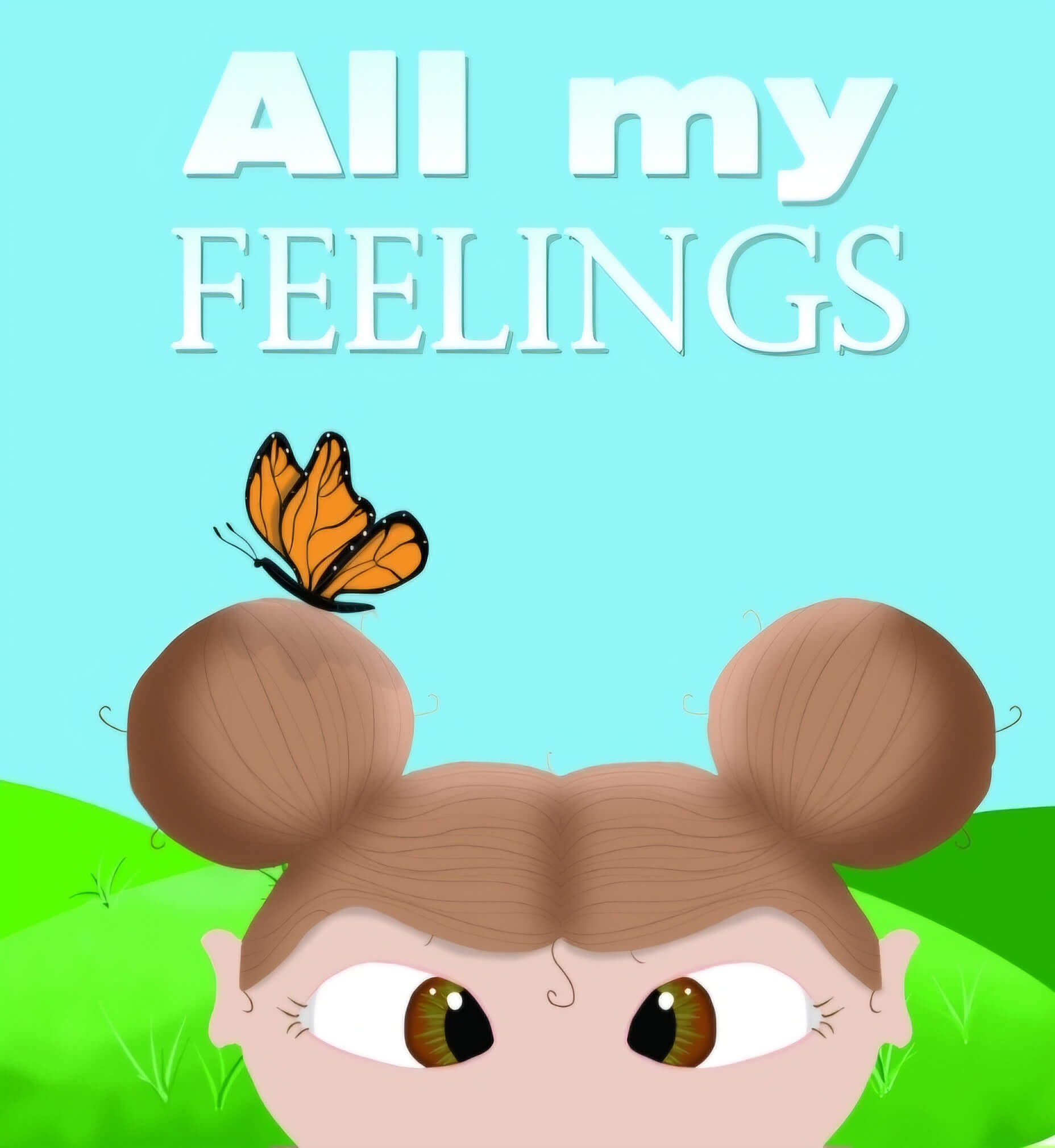 Have you ever watched a child light up with happiness, stand wide-eyed with wonder, or curl up in shyness?
Have you ever watched a child light up with happiness, stand wide-eyed with wonder, or curl up in shyness? Their emotions are pure and unfiltered, full of ups and downs, and sometimes downright overwhelming. And that’s exactly what inspired me to write my very first children’s book, "All My Feelings", a heartfelt exploration of the vibrant world of emotions for preschoolers.
I’m so thrilled to share a sneak peek with you today. "All My Feelings" was created to help parents, caregivers, and educators introduce young children to the idea that feeling is not only okay, but it's also an important part of growing up.
This story is for the little ones, ages 2–6, who are just starting to understand and name the swirling waves of emotions within them. Consider this not just a book, but a tool for nurturing emotional intelligence and creating meaningful conversations with your kids.
Stepping Into the Colorful World of Feelings
"All My Feelings" is built on a simple, powerful message: Every feeling matters. Whether it’s the sunshine of joy, the rain clouds of sadness, or the butterflies of excitement, "All My Feelings" encourages kids to notice, understand, and acknowledge their emotions.
My soon to come book takes readers through a vibrant adventure that brings emotions to life. Each page creates a whimsical yet easy-to-grasp representation of feelings, offering relatable moments that children will immediately connect with.
Playful rhymes and colorful illustrations, this book gives little readers permission to explore their emotions freely. Sadness isn’t something to hide, and anger doesn’t have to be scary—every feeling is natural and part of being human.
Why I Wrote "All My Feelings"
You’ve likely heard this said (and felt it yourself): Feelings are confusing—even for adults. If we, as grown-ups, sometimes struggle to name or understand what we’re feeling, imagine how much more confusing this can be for young kids.
When I set out to write "All My Feelings," I kept that in mind. Kids are full of life and wonder, but they are also learning what it means to feel disappointed, lonely, scared, or just different.
While they go through these daily highs and lows, our role as caring adults is to guide them through these moments in a healthy, affirming way.
I wanted to craft a story that feels like a hug—something that could normalize those big emotions kids experience. I want kids to know that yes, it’s okay to be upset, yes, it’s okay to just sit with your feelings, and yes, your feelings may change, and that’s okay too.
Just imagine a world where children grow up feeling confident, self-aware, and empathetic because they’ve been taught to understand feelings from an early age. Writing this book is one step toward that dream.
What Makes This Book Special
A Perfect Fit for Little Readers (Ages 2–6)
"All My Feelings" is tailored to meet preschoolers where they’re at developmentally. Each emotion is presented in a way that’s simple yet captivating, without being overwhelming. This is ideal for introducing emotional vocabulary in a fun, approachable way.
Playful, Colorful Illustrations
The illustrations burst with life on every page, mirroring the tone of each emotion. Imagine a grey rainy sky for mad, field of flowers and a picnic for happiness. It’s all designed to spark curiosity and help kids see feelings visually.
A Tool for Parents and Educators
"All My Feelings" isn’t just for kids; it’s for the adults reading along. Think of it as an invitation to start open and heartfelt conversations about emotions. The book naturally encourages discussions like, "How do you feel today?" or "Can you tell me about a time you felt shy?"
Why Emotional Awareness Matters for Kids
Helping kids understand their feelings is more than a developmental milestone, it is a gift. Emotional awareness lays the foundation for better communication, confidence, and resilience as they grow up. When children learn early on that their feelings are valid, they develop the tools to process, share, and even empathize with others.
"All My Feelings" is all about planting those seeds early. By encouraging kids to acknowledge all their emotions...whether they’re happy, challenging, or somewhere in between...we set them on a path toward emotional strength.
Coming Soon to Your Bookshelves!
"All My Feelings" is more than just a book; it is a heartfelt mission to create a generation of resilient, compassionate little thinkers. It’s launching soon, and I can’t wait for you and your children to step into this colorful world of emotions with me!
Stay tuned for updates, sneak peeks, and even some freebies in the weeks leading up to the release.
And if you’re as excited as I am, I would absolutely love for you to share this news with fellow parents, preschool teachers, or friends.
Together, we can give our kids the gift of understanding their emotions one story at a time.
Want to be notified when "All My Feelings" hits the shelves? Sign up for updates today so you don’t miss out!
Here’s to feelings, imagination, and happy little hearts,
Lynn
Unlocking the Power of Journaling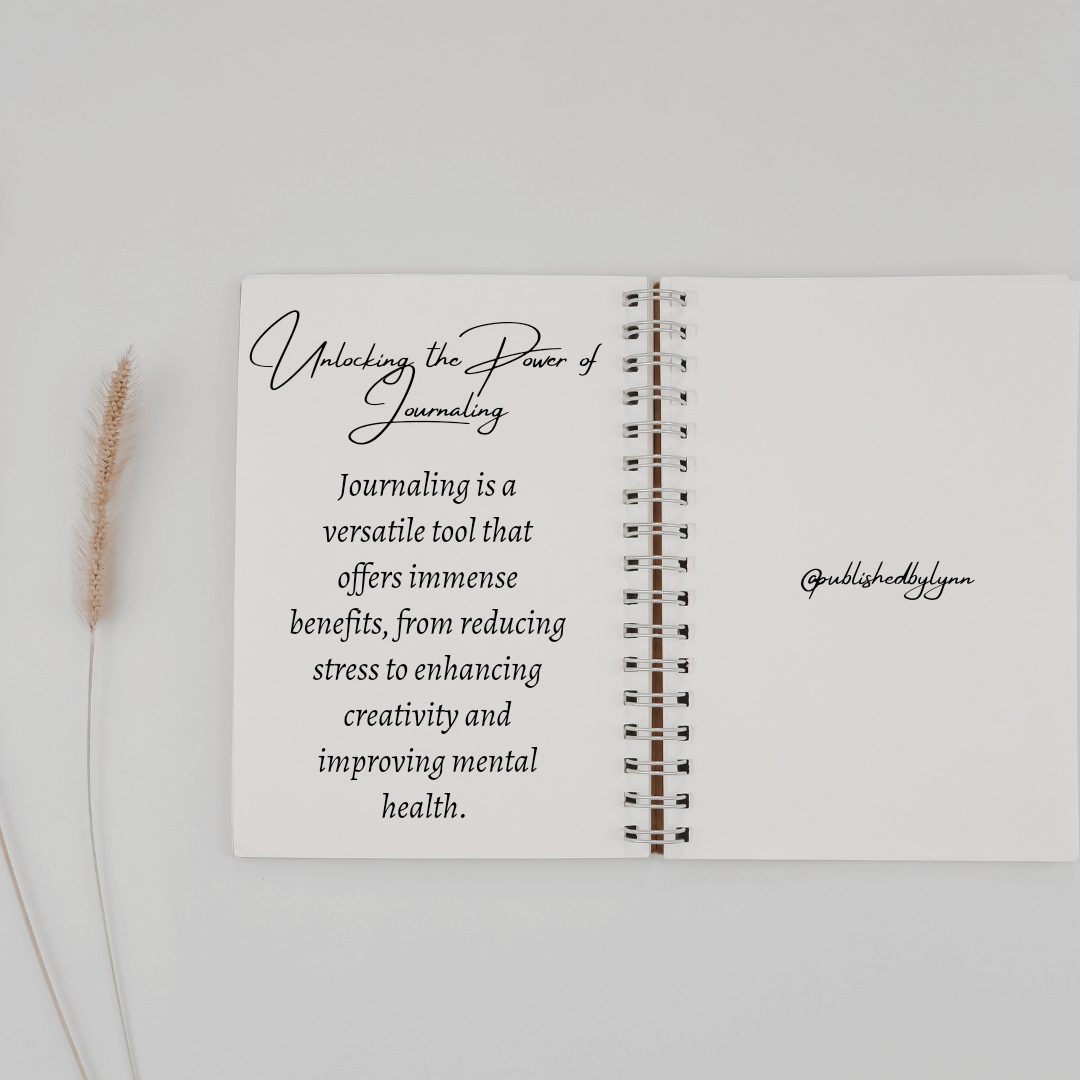 Journaling is a simple yet powerful tool that transcends age, lifestyle, and personal circumstances. Whether you're a student balancing exams and social life, a mom juggling family responsibilities, a teen navigating the ups and downs of adolescence, or a mental health advocate, journaling offers a host of benefits that can improve your life in meaningful ways.
Journaling is a simple yet powerful tool that transcends age, lifestyle, and personal circumstances. Whether you're a student balancing exams and social life, a mom juggling family responsibilities, a teen navigating the ups and downs of adolescence, or a mental health advocate, journaling offers a host of benefits that can improve your life in meaningful ways.
Journaling as a Teen
Reflecting on my teenage years, journaling was my refuge. It provided a safe space to express my emotions and make sense of the world around me. Whether it was dealing with school drama, family, or personal insecurities, my journal was always there to listen. It was like having a trusted friend who never judged, allowing me to explore my thoughts and feelings freely.
The Benefits of Journaling
Journaling offers a myriad of benefits that can enhance various aspects of your life:
Stress Reduction
Writing about your thoughts and feelings can be incredibly cathartic. It allows you to release pent-up emotions and provides an outlet for stress.
Improved Mental Health
Journaling helps you gain clarity and perspective on your problems, making them feel more manageable. It's also a great way to track your mental health over time, identifying patterns and triggers.
Enhanced Creativity
When you journal, you give yourself permission to explore your creativity without judgment. This can lead to new ideas and insights that you might not have discovered otherwise.
Better Organization
Writing things down helps you organize your thoughts and tasks more effectively. This is particularly beneficial for students and busy professionals who need to keep track of multiple responsibilities.
Scientific Backing
Research supports the numerous benefits of journaling. A study published in the Journal of Clinical Psychology found that expressive writing can improve mood disorders, reduce symptoms of depression, and enhance overall well-being. Another study in the Advances in Psychiatric Treatment journal highlighted that journaling can help individuals cope with traumatic events and improve their emotional resilience.
Getting Started with Journaling
If you're new to journaling, here are some practical tips to help you get started:
Choose Your Medium
I got you covered on this.
Set a Routine
Establish a regular journaling routine. It could be in the morning to set the tone for your day or at night to reflect on your experiences.
Use Prompts
If you’re unsure what to write about, prompts can be incredibly helpful. Here are a few to get you started:
• What am I grateful for today?
• What challenges did I face today, and how did I overcome them?
• What are my goals for the week?
Experiment with Different Types
Explore various types of journaling to find what works best for you. Some options include gratitude journaling, bullet journaling, and reflective journaling.
Journaling is a versatile tool that offers immense benefits, from reducing stress to enhancing creativity and improving mental health. Whether you're a student, mom, teen, or mental health enthusiast, journaling can positively impact your life.
Ready to start your journaling journey? Grab one of my journals, a pen and begin exploring the endless possibilities that journaling offers. Remember, there’s no right or wrong way to journal—just start writing and see where it takes you. Feel free to share your experiences with us; we’d love to hear how journaling has enriched your life.
 Journaling is a simple yet powerful tool that transcends age, lifestyle, and personal circumstances. Whether you're a student balancing exams and social life, a mom juggling family responsibilities, a teen navigating the ups and downs of adolescence, or a mental health advocate, journaling offers a host of benefits that can improve your life in meaningful ways.
Journaling is a simple yet powerful tool that transcends age, lifestyle, and personal circumstances. Whether you're a student balancing exams and social life, a mom juggling family responsibilities, a teen navigating the ups and downs of adolescence, or a mental health advocate, journaling offers a host of benefits that can improve your life in meaningful ways.Journaling as a Teen
Reflecting on my teenage years, journaling was my refuge. It provided a safe space to express my emotions and make sense of the world around me. Whether it was dealing with school drama, family, or personal insecurities, my journal was always there to listen. It was like having a trusted friend who never judged, allowing me to explore my thoughts and feelings freely.
The Benefits of Journaling
Journaling offers a myriad of benefits that can enhance various aspects of your life:
Stress Reduction
Writing about your thoughts and feelings can be incredibly cathartic. It allows you to release pent-up emotions and provides an outlet for stress.
Improved Mental Health
Journaling helps you gain clarity and perspective on your problems, making them feel more manageable. It's also a great way to track your mental health over time, identifying patterns and triggers.
Enhanced Creativity
When you journal, you give yourself permission to explore your creativity without judgment. This can lead to new ideas and insights that you might not have discovered otherwise.
Better Organization
Writing things down helps you organize your thoughts and tasks more effectively. This is particularly beneficial for students and busy professionals who need to keep track of multiple responsibilities.
Scientific Backing
Research supports the numerous benefits of journaling. A study published in the Journal of Clinical Psychology found that expressive writing can improve mood disorders, reduce symptoms of depression, and enhance overall well-being. Another study in the Advances in Psychiatric Treatment journal highlighted that journaling can help individuals cope with traumatic events and improve their emotional resilience.
Getting Started with Journaling
If you're new to journaling, here are some practical tips to help you get started:
Choose Your Medium
I got you covered on this.
Set a Routine
Establish a regular journaling routine. It could be in the morning to set the tone for your day or at night to reflect on your experiences.
Use Prompts
If you’re unsure what to write about, prompts can be incredibly helpful. Here are a few to get you started:
• What am I grateful for today?
• What challenges did I face today, and how did I overcome them?
• What are my goals for the week?
Experiment with Different Types
Explore various types of journaling to find what works best for you. Some options include gratitude journaling, bullet journaling, and reflective journaling.
Journaling is a versatile tool that offers immense benefits, from reducing stress to enhancing creativity and improving mental health. Whether you're a student, mom, teen, or mental health enthusiast, journaling can positively impact your life.
Ready to start your journaling journey? Grab one of my journals, a pen and begin exploring the endless possibilities that journaling offers. Remember, there’s no right or wrong way to journal—just start writing and see where it takes you. Feel free to share your experiences with us; we’d love to hear how journaling has enriched your life.
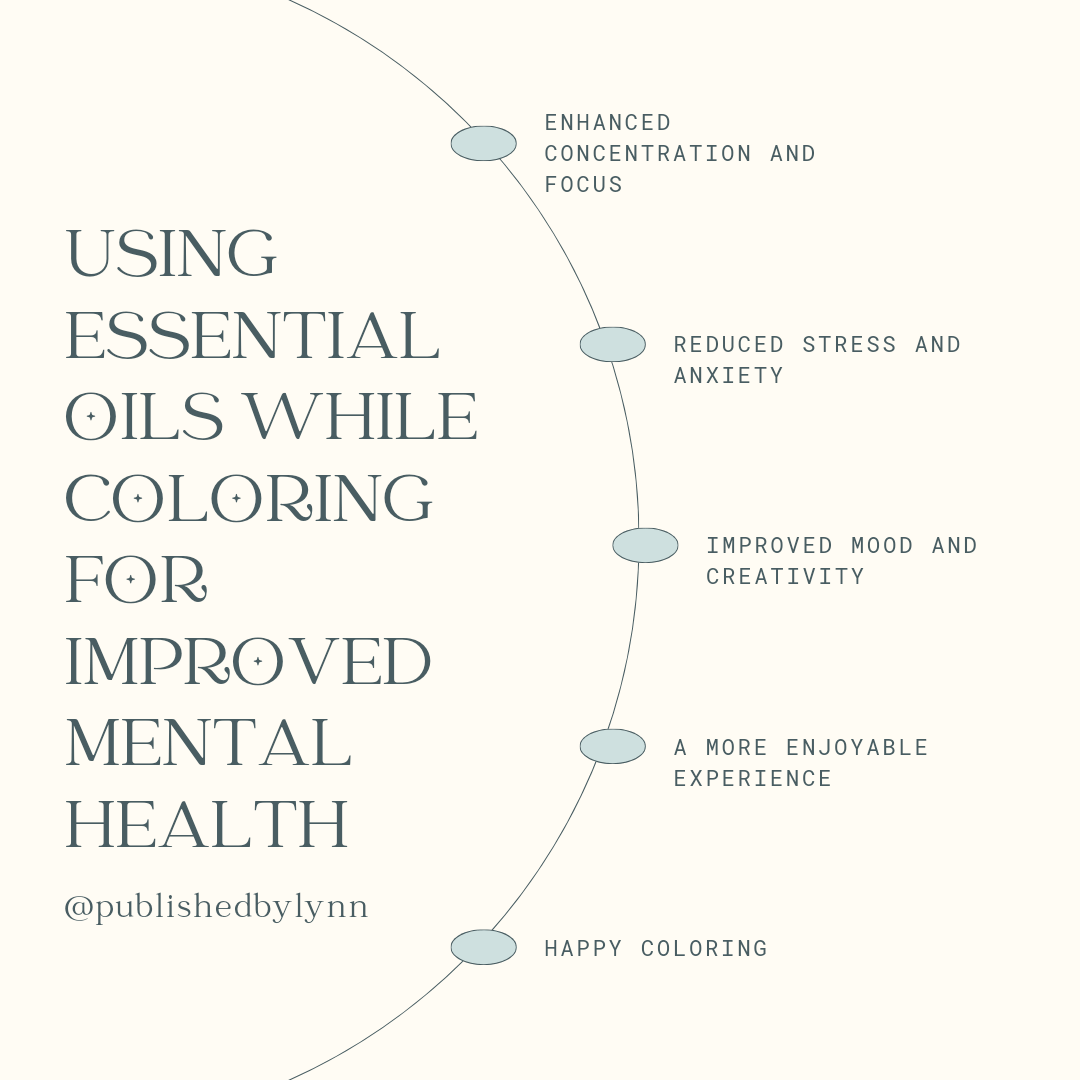
Using Essential Oils While Coloring for Improved Mental Health
Coloring isn't just for kids anymore! Adults across the globe are rediscovering the joys of coloring, often finding it a wonderful way to relax and unwind. But did you know that you can elevate this calming activity even further by incorporating essential oils?
The Benefits of Using Essential Oils While Coloring
Combining essential oils with your coloring routine can have several mental health benefits:
• Enhanced Concentration and Focus: Certain essential oils, like peppermint and rosemary, help sharpen your focus and make coloring a more mindful and engaging activity.
• Reduced Stress and Anxiety: Aromatherapy through essential oils such as lavender and chamomile can help reduce stress and anxiety, promoting a more relaxed and calm coloring experience.
• Improved Mood and Creativity: Essential oils like bergamot and lemon are known for their uplifting properties, which can boost your mood and creativity while you color.
• A More Enjoyable Experience: The soothing environment created by essential oils can make your coloring sessions more enjoyable and beneficial.
Essential Oils to Elevate Your Coloring Experience
Here are some essential oils that you should consider incorporating into your next coloring session:
Lavender
Lavender is well-known for its calming and soothing properties. It helps to reduce anxiety and promote relaxation, making it a perfect complement to your coloring activities.
Peppermint
Peppermint essential oil can enhance focus and concentration, making it easier to immerse yourself in the coloring process. It's invigorating and refreshing, helping to keep your mind sharp.
Bergamot
Bergamot has uplifting properties that can improve your mood. Its citrusy and slightly floral scent is perfect for sparking creativity and making your coloring sessions more enjoyable.
Valor
This essential oil blend is known for promoting feelings of courage and confidence. It's perfect for those moments when you need an extra boost to start a new coloring project.
Stress Away
Just as its name suggests, Stress Away is designed to help melt away your stress. Its calming properties make it ideal for unwinding after a long day.
Frankincense
Frankincense is excellent for promoting a sense of peace and grounding. It's perfect if you're looking to make your coloring sessions a meditative experience.
Peace and Calming
This blend is designed to create a tranquil environment. It's perfect for evening coloring sessions when you're winding down from the day.
DIY Essential Oil Blends for Coloring
To maximize the benefits of essential oils while coloring, try creating your own blends. Here are three blends perfect for bringing mental support, stress relief, and calmness.
1. Mental Support Blend
• 3 drops Peppermint
• 2 drops Rosemary
• 3 drops Lemon
This blend is perfect for enhancing focus and concentration. The invigorating scents of peppermint and rosemary combined with the uplifting aroma of lemon will keep your mind sharp and engaged.
2. Stress Relief Blend
• 4 drops Lavender
• 3 drops Bergamot
• 2 drops Frankincense
This blend is designed to melt away stress and anxiety. Lavender and bergamot work together to create a calming atmosphere, while frankincense adds a grounding note.
3. Calmness Blend
• 3 drops Valor
• 4 drops Peace and Calming
• 2 drops Stress Away
This blend is perfect for creating a serene and tranquil environment. It's ideal for evening coloring sessions when you're looking to unwind and relax.
How to Use Essential Oils While Coloring
• Diffuser: Add a few drops of your chosen essential oil blend to a diffuser and place it near your coloring area.
• Spray Bottle: Create a spray by mixing water and your essential oil blend in a small spray bottle. Mist the air around your coloring space lightly.
• Scented Candles: If you're into DIY, consider making your own scented candles with essential oils and light them while you color.
• Personal Inhaler: Add a few drops of essential oil to a personal inhaler for a quick scent boost during your coloring session.
Incorporating essential oils into your coloring routine can transform it into a holistic experience that promotes mental well-being. Whether you're looking to enhance focus, reduce stress, or boost your mood, there's an essential oil to help you achieve your goal.
Ready to take your coloring sessions to the next level? Try out these essential oil blends and see the difference for yourself. And if you're new to essential oils and need some guidance, our team at Young Living Essential Oils is always here to help.
To learn more see my website at https://www.myyl.com/lemonsandlimewithlynn
Coloring isn't just for kids anymore! Adults across the globe are rediscovering the joys of coloring, often finding it a wonderful way to relax and unwind. But did you know that you can elevate this calming activity even further by incorporating essential oils?
The Benefits of Using Essential Oils While Coloring
Combining essential oils with your coloring routine can have several mental health benefits:
• Enhanced Concentration and Focus: Certain essential oils, like peppermint and rosemary, help sharpen your focus and make coloring a more mindful and engaging activity.
• Reduced Stress and Anxiety: Aromatherapy through essential oils such as lavender and chamomile can help reduce stress and anxiety, promoting a more relaxed and calm coloring experience.
• Improved Mood and Creativity: Essential oils like bergamot and lemon are known for their uplifting properties, which can boost your mood and creativity while you color.
• A More Enjoyable Experience: The soothing environment created by essential oils can make your coloring sessions more enjoyable and beneficial.
Essential Oils to Elevate Your Coloring Experience
Here are some essential oils that you should consider incorporating into your next coloring session:
Lavender
Lavender is well-known for its calming and soothing properties. It helps to reduce anxiety and promote relaxation, making it a perfect complement to your coloring activities.
Peppermint
Peppermint essential oil can enhance focus and concentration, making it easier to immerse yourself in the coloring process. It's invigorating and refreshing, helping to keep your mind sharp.
Bergamot
Bergamot has uplifting properties that can improve your mood. Its citrusy and slightly floral scent is perfect for sparking creativity and making your coloring sessions more enjoyable.
Valor
This essential oil blend is known for promoting feelings of courage and confidence. It's perfect for those moments when you need an extra boost to start a new coloring project.
Stress Away
Just as its name suggests, Stress Away is designed to help melt away your stress. Its calming properties make it ideal for unwinding after a long day.
Frankincense
Frankincense is excellent for promoting a sense of peace and grounding. It's perfect if you're looking to make your coloring sessions a meditative experience.
Peace and Calming
This blend is designed to create a tranquil environment. It's perfect for evening coloring sessions when you're winding down from the day.
DIY Essential Oil Blends for Coloring
To maximize the benefits of essential oils while coloring, try creating your own blends. Here are three blends perfect for bringing mental support, stress relief, and calmness.
1. Mental Support Blend
• 3 drops Peppermint
• 2 drops Rosemary
• 3 drops Lemon
This blend is perfect for enhancing focus and concentration. The invigorating scents of peppermint and rosemary combined with the uplifting aroma of lemon will keep your mind sharp and engaged.
2. Stress Relief Blend
• 4 drops Lavender
• 3 drops Bergamot
• 2 drops Frankincense
This blend is designed to melt away stress and anxiety. Lavender and bergamot work together to create a calming atmosphere, while frankincense adds a grounding note.
3. Calmness Blend
• 3 drops Valor
• 4 drops Peace and Calming
• 2 drops Stress Away
This blend is perfect for creating a serene and tranquil environment. It's ideal for evening coloring sessions when you're looking to unwind and relax.
How to Use Essential Oils While Coloring
• Diffuser: Add a few drops of your chosen essential oil blend to a diffuser and place it near your coloring area.
• Spray Bottle: Create a spray by mixing water and your essential oil blend in a small spray bottle. Mist the air around your coloring space lightly.
• Scented Candles: If you're into DIY, consider making your own scented candles with essential oils and light them while you color.
• Personal Inhaler: Add a few drops of essential oil to a personal inhaler for a quick scent boost during your coloring session.
Incorporating essential oils into your coloring routine can transform it into a holistic experience that promotes mental well-being. Whether you're looking to enhance focus, reduce stress, or boost your mood, there's an essential oil to help you achieve your goal.
Ready to take your coloring sessions to the next level? Try out these essential oil blends and see the difference for yourself. And if you're new to essential oils and need some guidance, our team at Young Living Essential Oils is always here to help.
To learn more see my website at https://www.myyl.com/lemonsandlimewithlynn
Happy coloring!
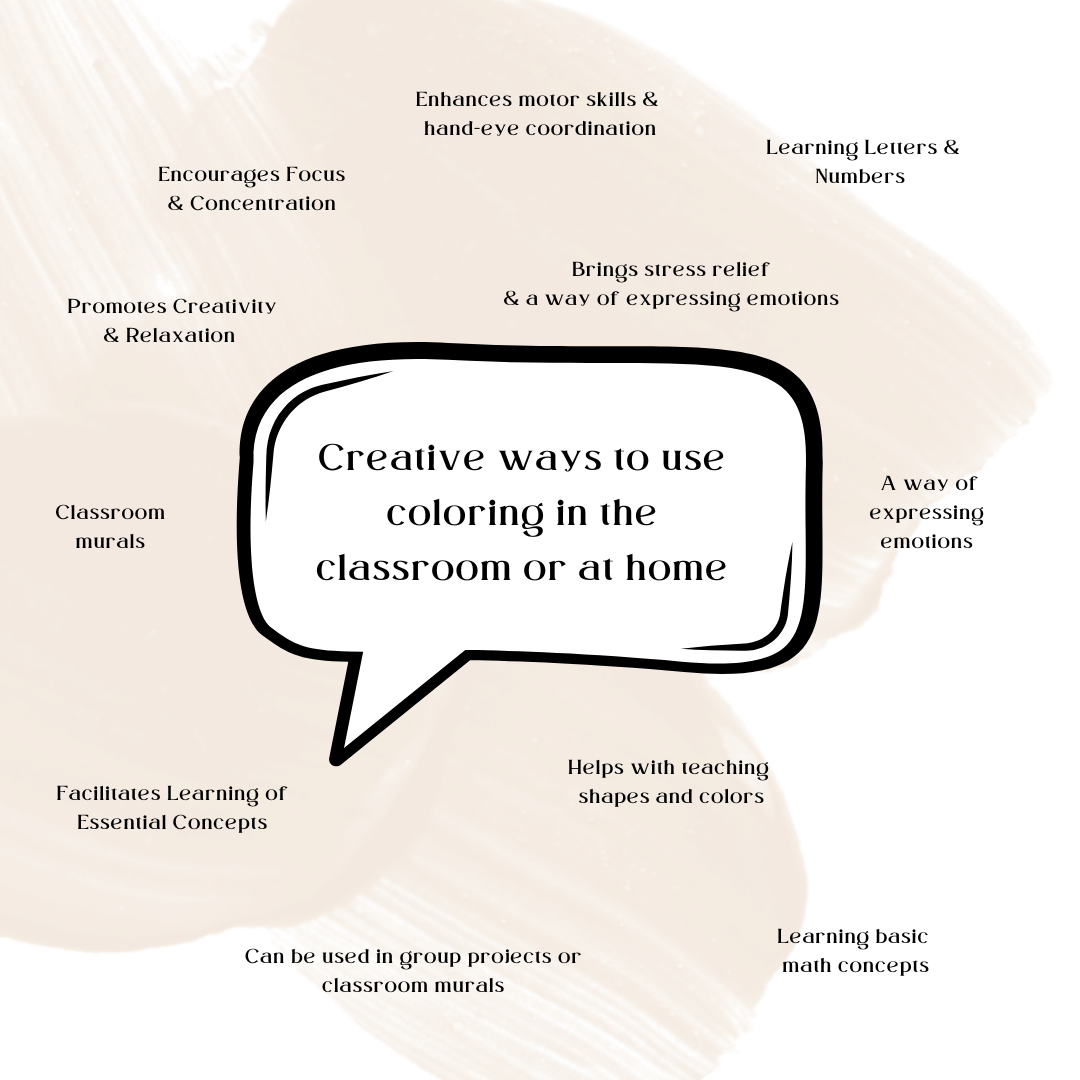
Coloring books have long been a favorite pastime for children, but did you know they offer significant educational and developmental benefits? Whether you're a teacher, homeschooler, parent, stay-at-home mom, or daycare educator, integrating coloring books into your daily routine can be both fun and beneficial. In this blog post, we'll explore creative ways to use coloring books in educational settings and at home.
Educational and Developmental Benefits of Coloring Books
Enhances Fine Motor Skills and Hand-Eye Coordination
Coloring within lines helps young children improve their fine motor skills and hand-eye coordination. These skills are essential for writing, cutting, and other classroom activities.
Promotes Creativity and Imagination
Coloring allows children to explore a world of colors and shapes, fostering creativity and imagination. They can experiment with different color combinations and create unique masterpieces.
Facilitates Learning of Essential Concepts
Coloring books can be used as a tool to teach letters, numbers, shapes, and basic math. This makes learning more engaging and interactive for young children.
Encourages Focus and Concentration
The act of coloring requires focus and concentration, making it an excellent activity for children with attention difficulties. It helps them practice sitting still and focusing on a task for an extended period.
Provides a Calming and Therapeutic Activity
Coloring has a calming effect that can help reduce stress and anxiety in children. It provides a quiet, meditative activity that can be especially beneficial during stressful times.
Creative Ways to Integrate Coloring Books
Lesson Plans for Various Subjects
Teaching Shapes and Colors
Use coloring books to teach shapes and colors. Have children color different shapes and label them. This not only helps them recognize shapes but also reinforces their understanding of colors.
Learning Letters and Numbers
Incorporate alphabet and number coloring books into your lesson plans. Children can color the letters and numbers while practicing their writing skills. This method makes learning more interactive and enjoyable.
Basic Math Concepts
Coloring books can be used to teach basic math concepts such as addition and subtraction. For example, children can color groups of objects and then add or subtract them. This visual approach helps in better understanding mathematical concepts.
Collaborative Coloring Activities
Group Projects
Encourage teamwork and communication skills by organizing collaborative coloring activities. Divide children into small groups and assign them a large coloring poster. They must work together to complete the poster, promoting cooperation and teamwork.
Classroom Murals
Create a sense of community by having the entire class work on a classroom mural. Each child can color a section of the mural, which can then be displayed in the classroom. This fosters a sense of accomplishment and belonging.
Therapeutic Uses
Stress Relief
Coloring can be a therapeutic activity that helps children relax and unwind. Set aside time for coloring sessions, especially during stressful periods such as exam times or after a busy day.
Emotion Expression
Use coloring books to help children express their emotions. Provide them with coloring books that focus on different emotions and encourage them to color their current feelings. This helps in emotional regulation and self-expression.
Incorporating coloring books into your teaching or parenting routine offers a wealth of benefits, from enhancing fine motor skills to providing a calming and therapeutic activity. By integrating these creative ideas, you can make learning more engaging and enjoyable for children.
Let's make learning fun and colorful!
By using coloring books creatively in the classroom or at home, you can provide children with a multifaceted learning experience that is both educational and enjoyable. Whether you're teaching shapes, promoting teamwork, or offering a therapeutic activity, coloring books are a versatile tool that can make a significant impact on a child's development.

